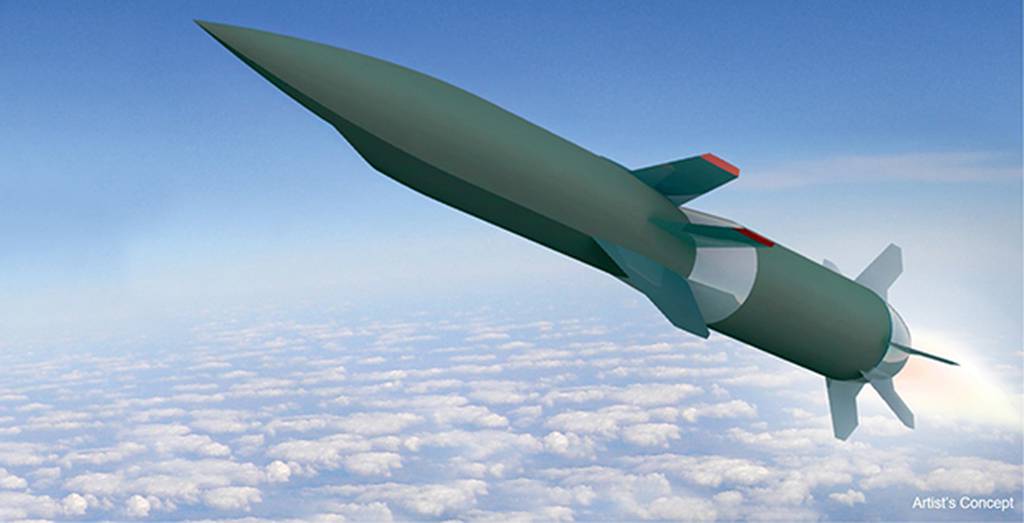La Agencia de Proyectos de Investigación Avanzada de Defensa (DARPA -USA), en un intento de avanzar más rápidamente en urar su programa de armas hipersónicas impulsadas por Scramjet (HCM), está buscando $ 60 millones en su presupuesto fiscal 2023 para la próxima fase del concepto de armas hipersónicas. La agencia también solicita $ 18 millones para su programa Glide Breaker, que avanza en el desarrollo de capacidades para contrarrestar las “amenazas hipersónicas emergentes”, en desarrollo en países como China y Rusia entre otros.
WASHINGTON — The Defense Advanced Research Projects Agency, in a bid to mature its scramjet-powered hypersonic weapon program, is seeking $60 million in its fiscal 2023 budget for the next phase of the Hypersonic Air-breathing Weapons Concept.
The new-start program, dubbed MoHAWC, is a successor to HAWC, developed jointly with the Air Force using Raytheon and Lockheed Martin as prime contractors. Both companies conducted successful test flights of their vehicles, with Raytheon’s flying in September and Lockheed’s in March. The HAWC vehicles are powered by scramjet engines designed to offer better, more efficient performance at hypersonic speeds. Northrop Grumman built the propulsion system for Raytheon’s HAWC vehicle and Aerojet provided Lockheed’s.
With HAWC’s flight-test objectives completed, DARPA will build on that work through MoHAWC. Budget documents show the agency wants to further develop the vehicle’s scramjet propulsion system, upgrade integration algorithms, reduce the size of navigation components and improve its manufacturing approach.
HAWC and its successor are part of the Defense Department’s broader hypersonic weapons portfolio, which has been given higher priority in light of threats from Russia and China. The government is expected to spend $15 billion on the technology between 2015 and 2024. Pentagon officials in February met with defense industry to highlight the urgency of developing hypersonic technology on faster timelines and better understand impediments to fielding these weapons.
The $60 million would support that technology development and fund initial long-lead component procurement for four flight-test systems. DARPA also expects to complete subsystem technology risk-reduction efforts and begin assembly, integration and ground testing of cruisers.
Asked if DARPA plans to buy more HAWC vehicles from Lockheed and Raytheon, spokesman Randy Atkins told C4ISRNET in an April 27 email that any discussion about contracting strategies is “pre-decisional.” DARPA is still gathering lessons from the HAWC flight tests to inform MoHAWC’s next steps, he added.
Elsewhere in DARPA’s request for hypersonic technology development, the agency seeks $30 million for another joint Air Force program called Tactical Boost Glide. The program is developing tactical range boost-glide systems, and DARPA plans to conduct its third flight test in fiscal 2023.
The agency is also requesting $18 million for its Glide Breaker program, which is maturing capabilities to counter “emerging hypersonic threats.” Phase 1 of Glide Breaker demonstrated a divert and attitude control system (DACS) designed to allow a kill vehicle to intercept a hypersonic weapon during its glide phase.
DARPA announced April 15 that it has transitioned to the second phase of Glide Breaker, which will focus on “quantifying aerodynamic jet interaction effects from DACS plumes and hypersonic air flows around an interceptor kill vehicle.”
“Phases 1 and 2 together fill the technology gaps necessary for the U.S. to develop a robust defense against hypersonic threats,” Maj. Nathan Greiner, DARPA’s program manager for Glide Breaker, said in the release.
Fiscal 2023 plans for Glide Breaker include component wind testing and preliminary design for the flight test article.
Fuente: https://www.c4isrnet.com


